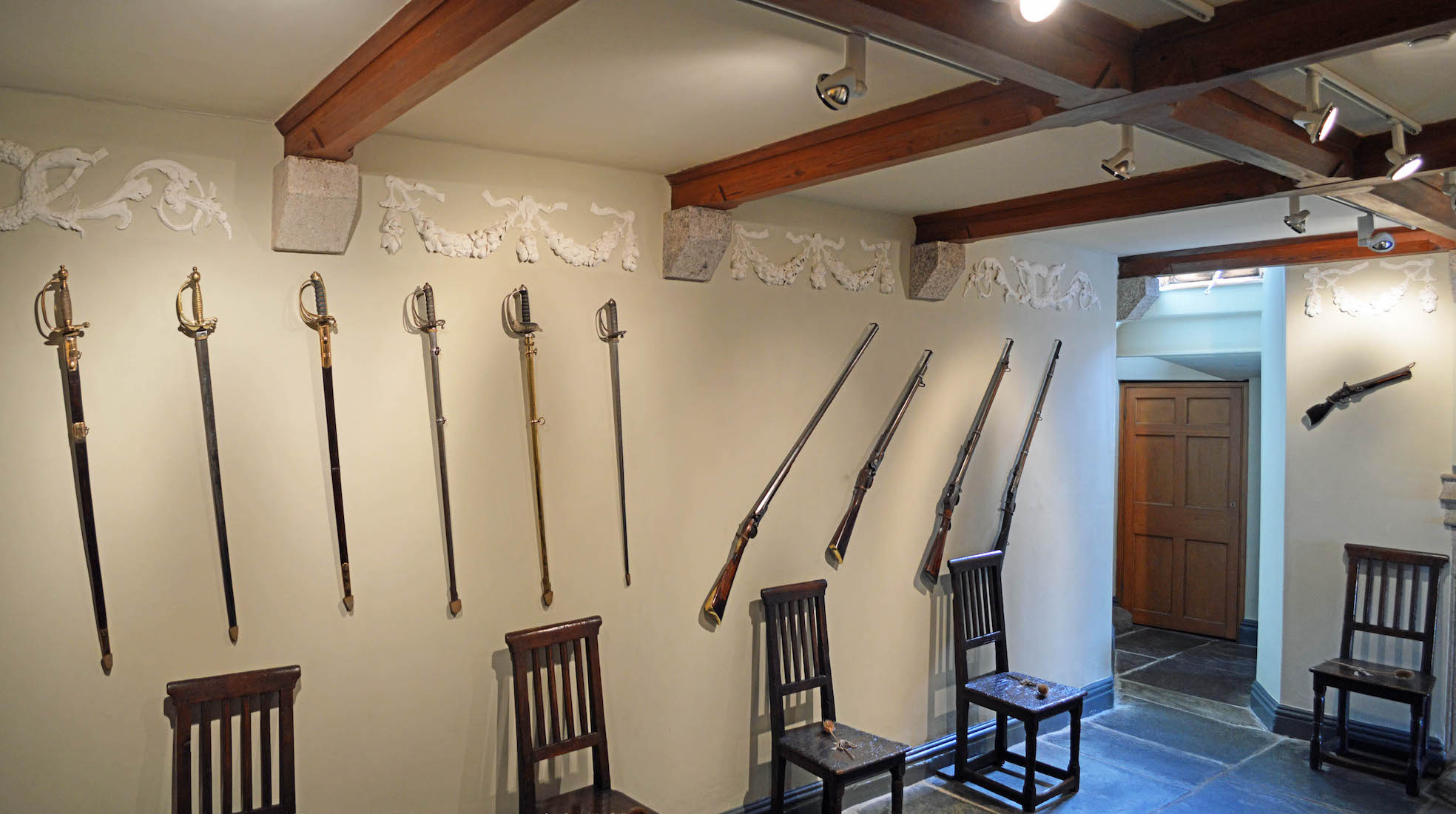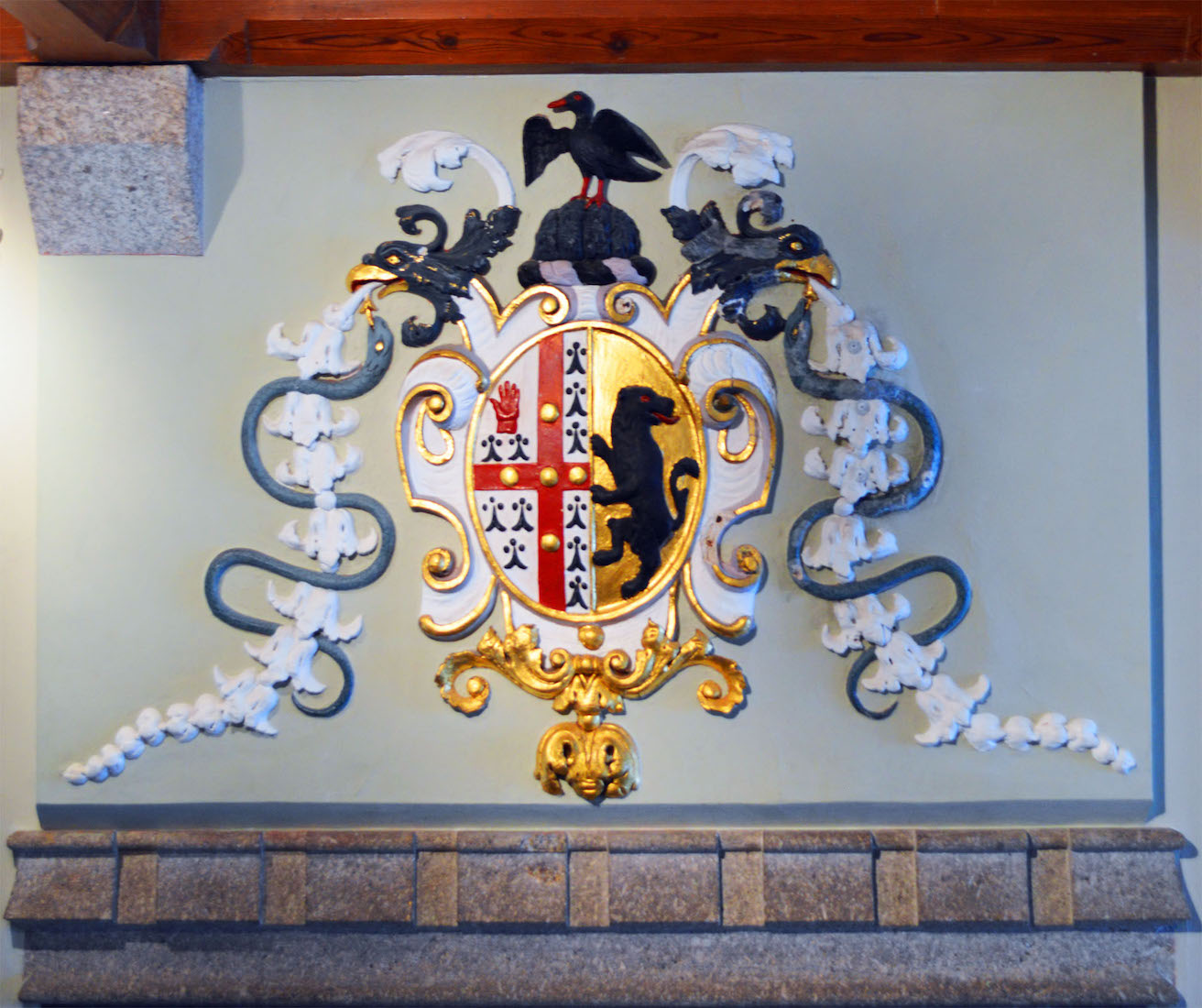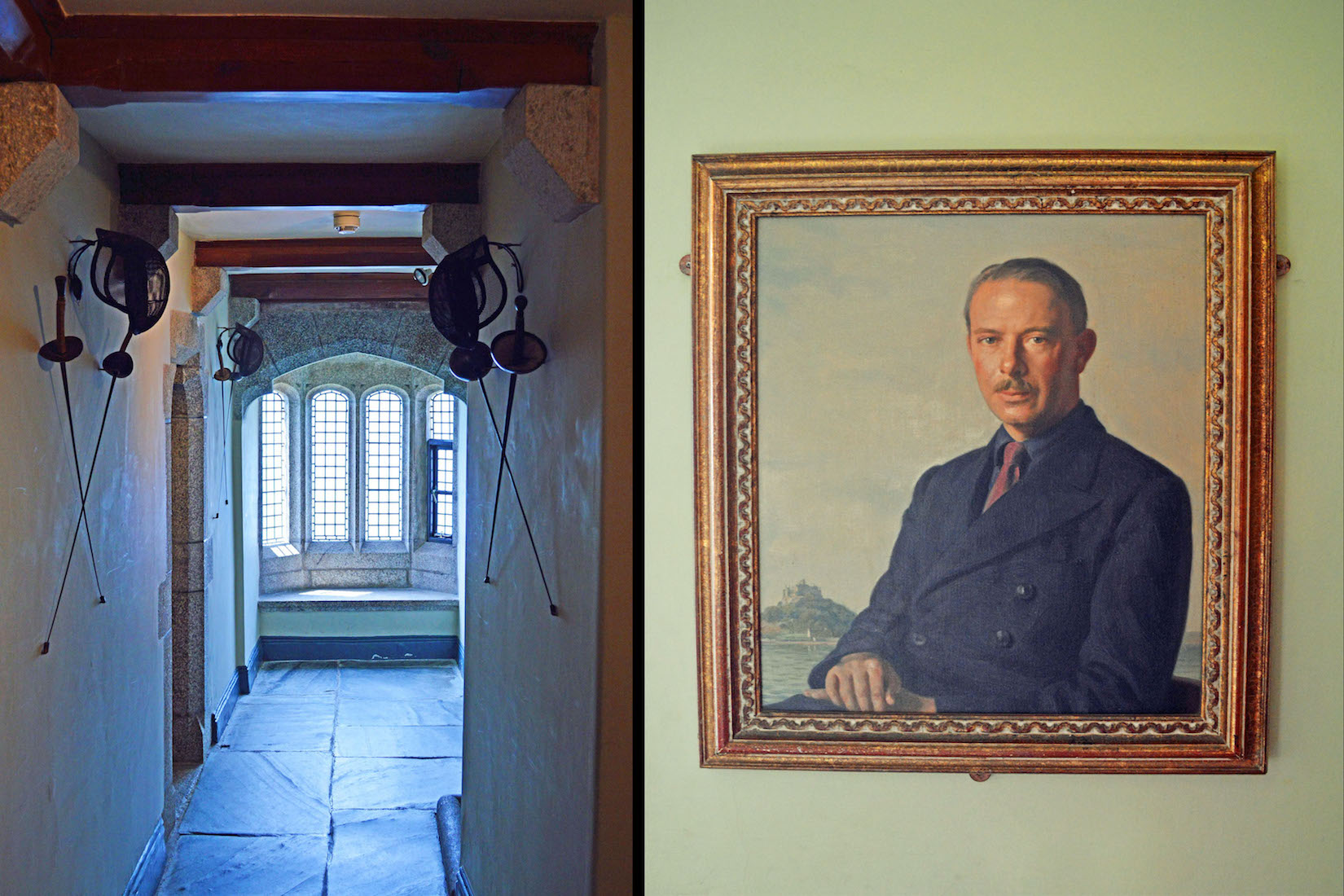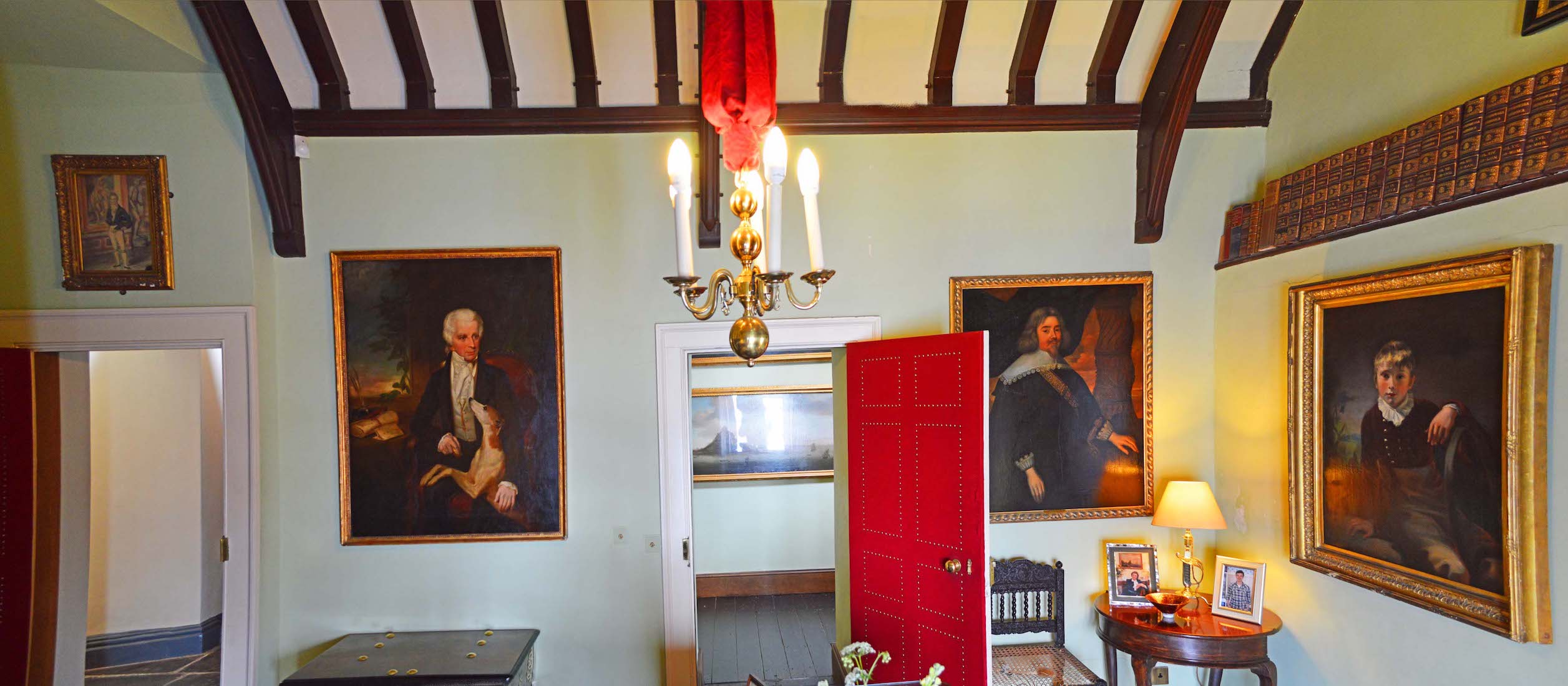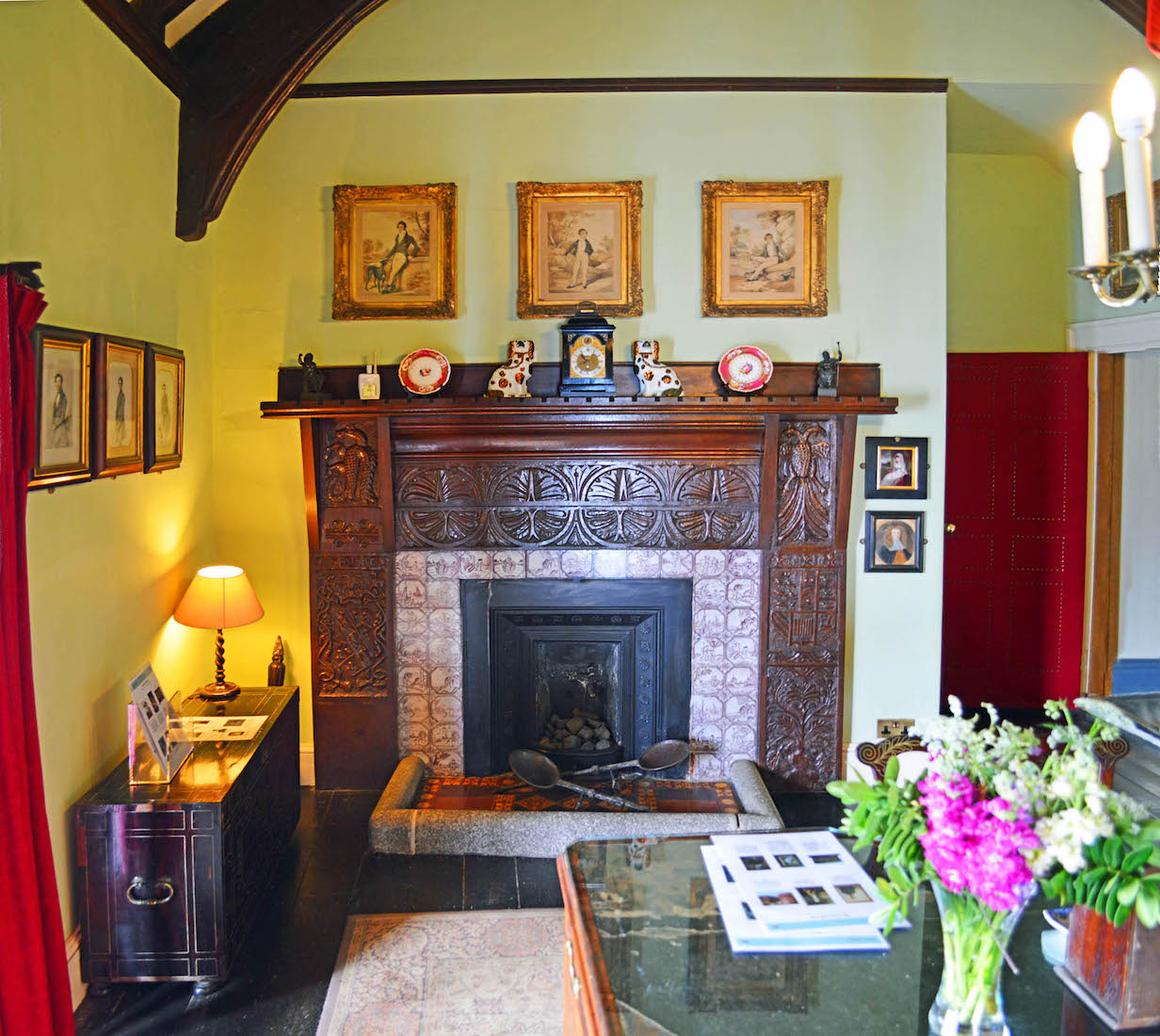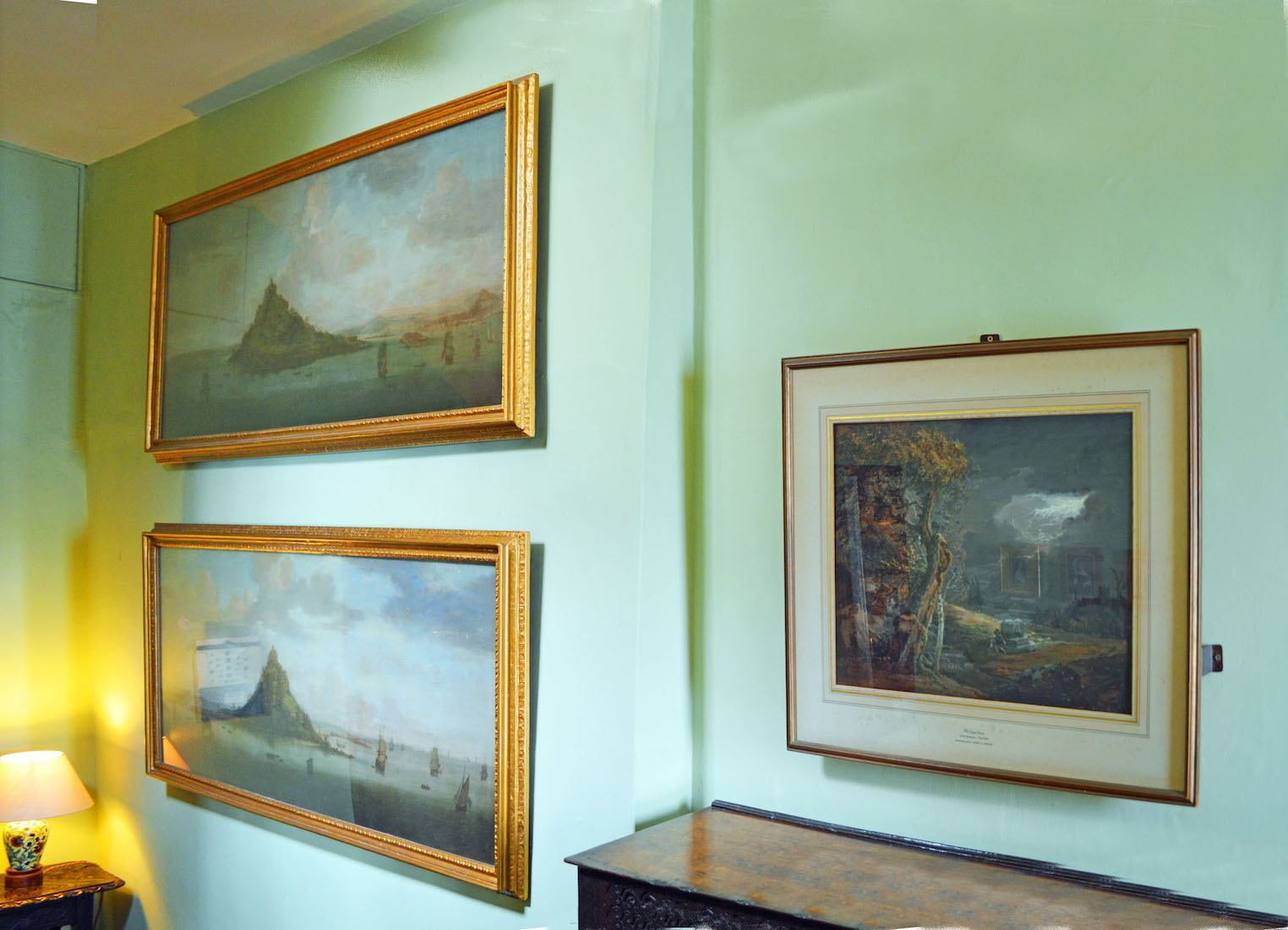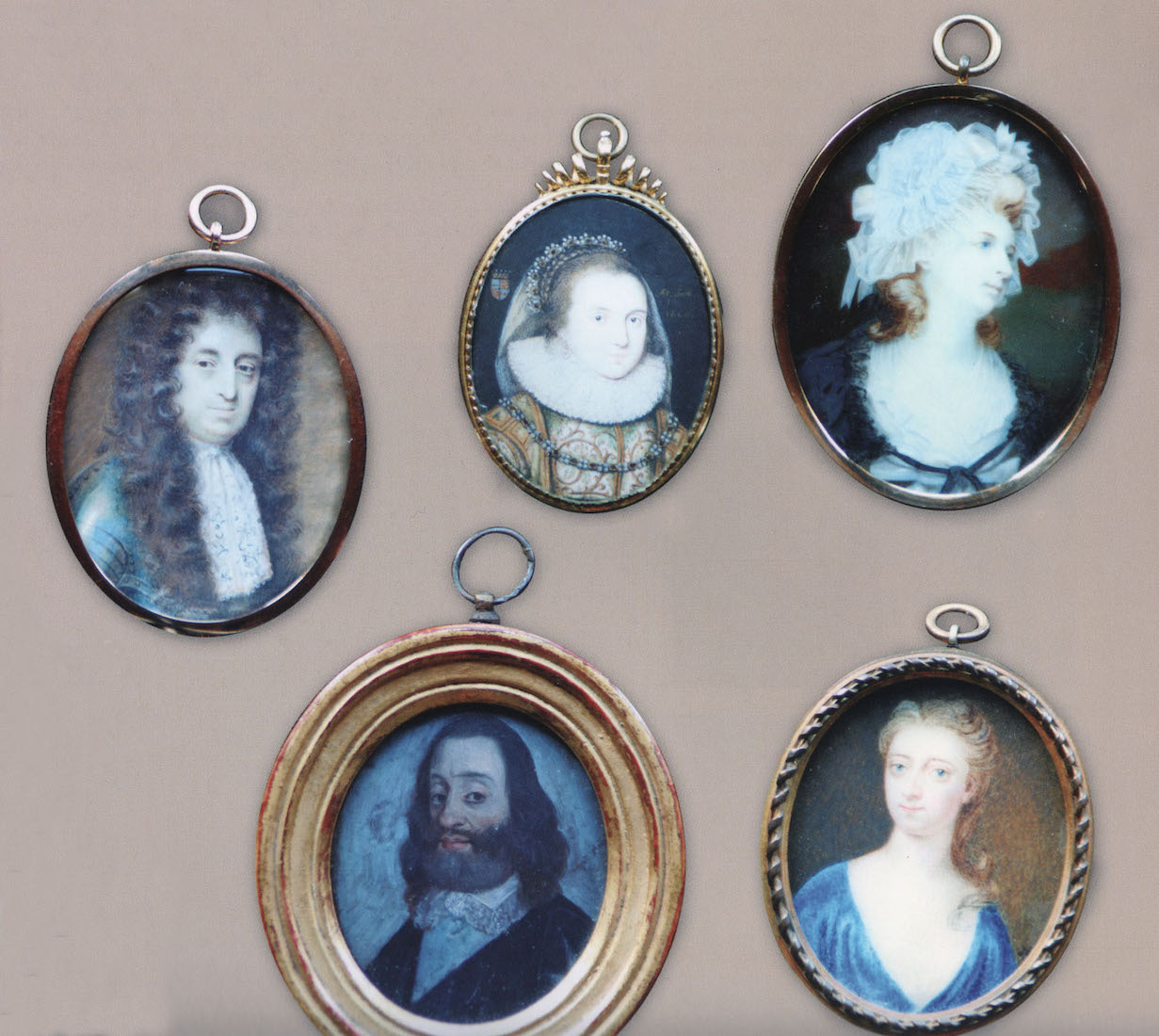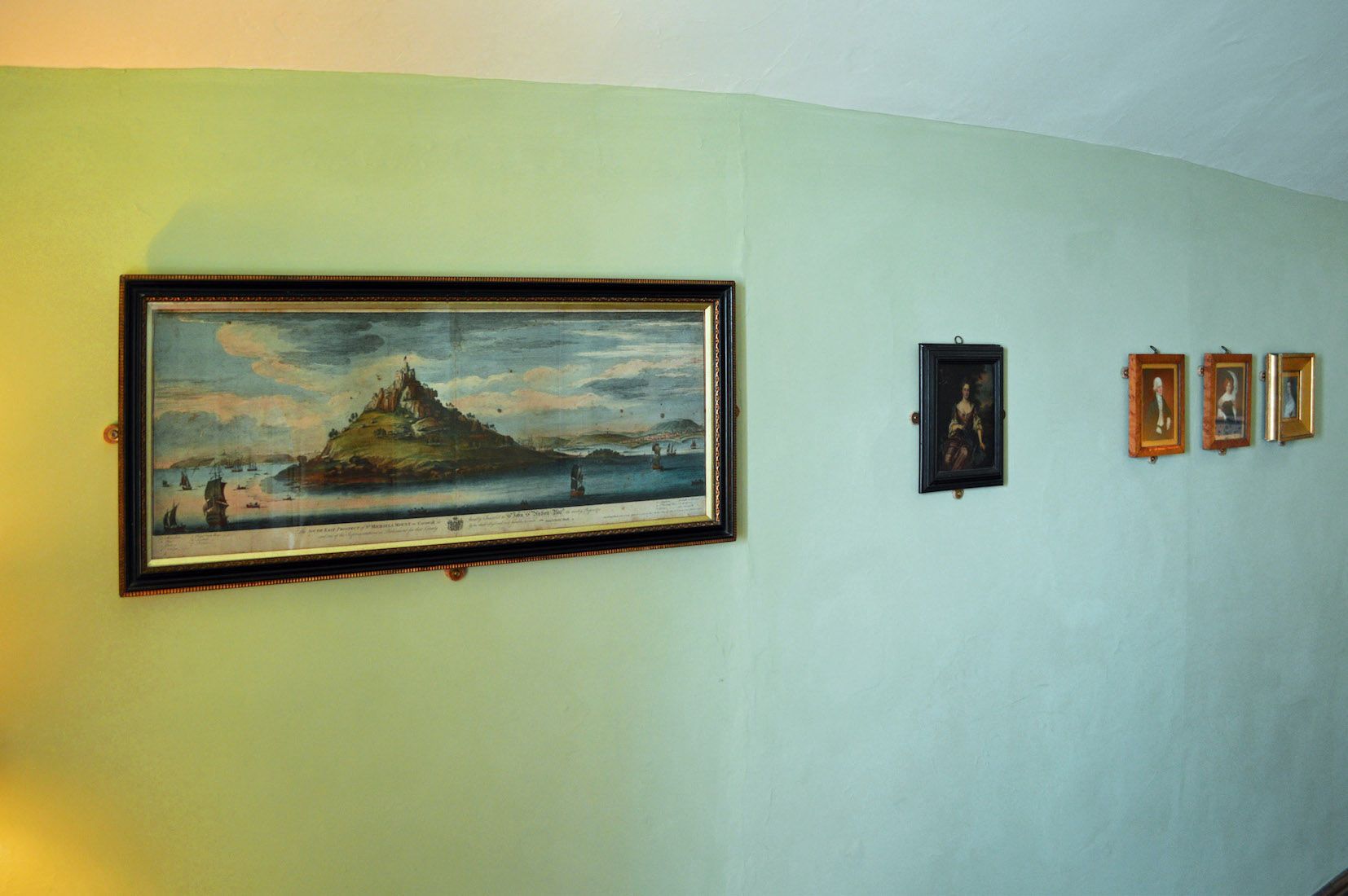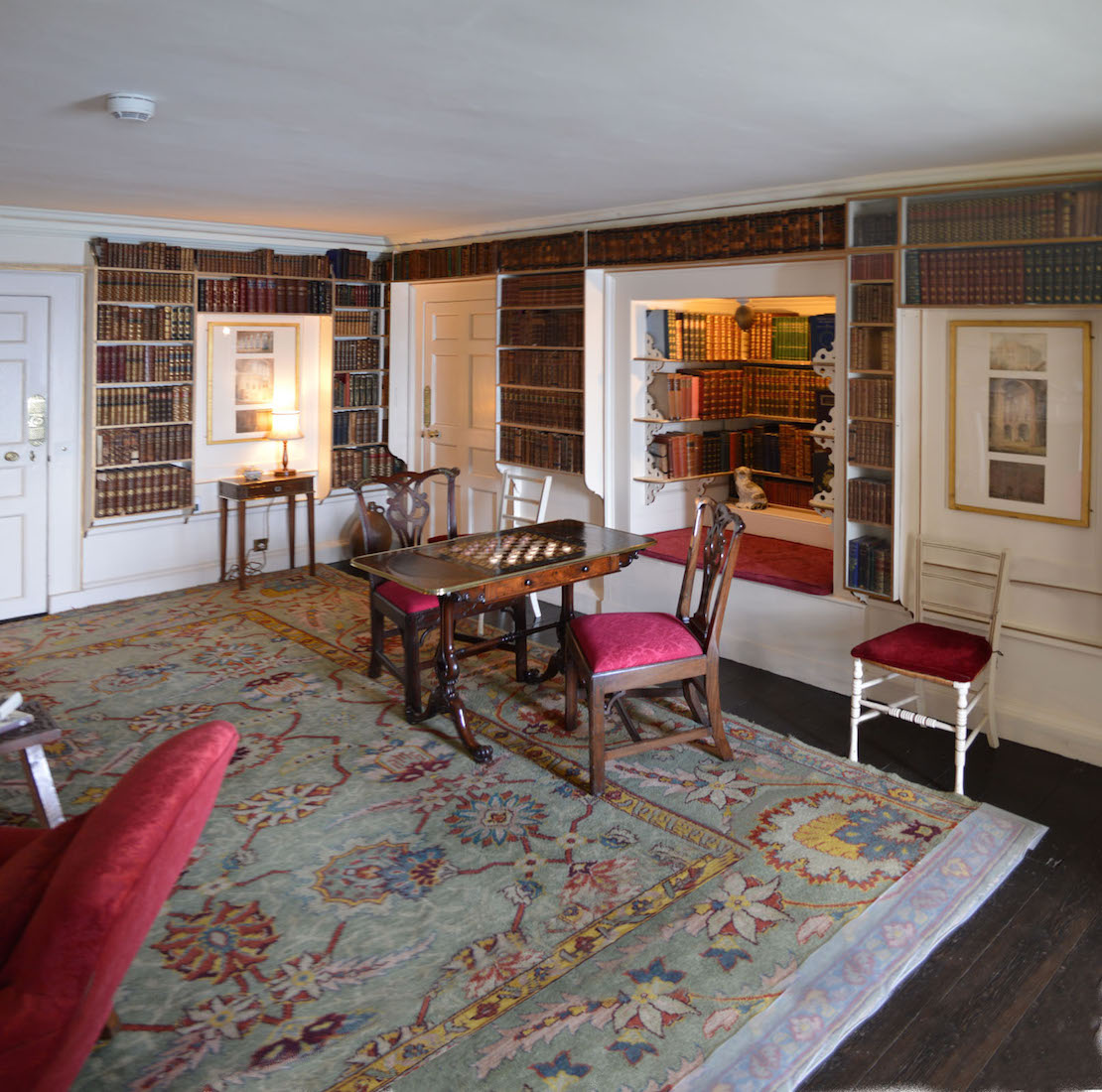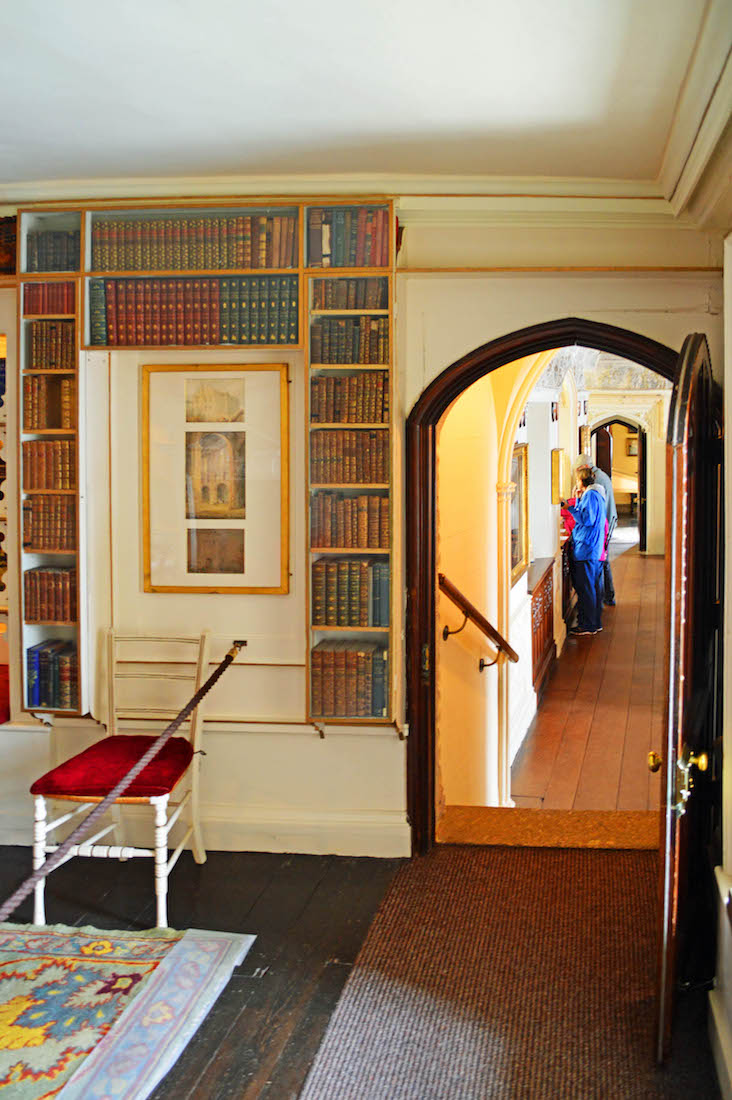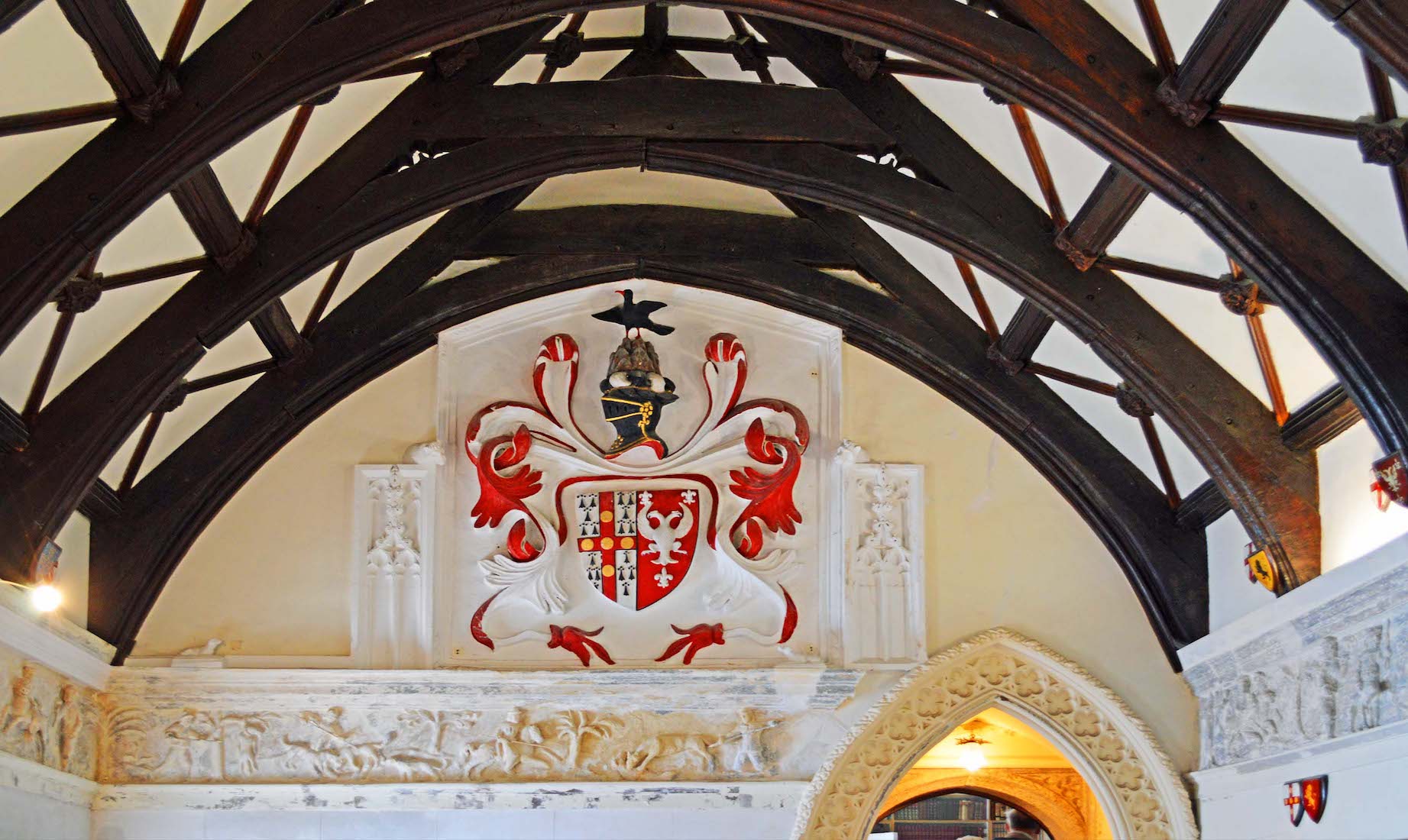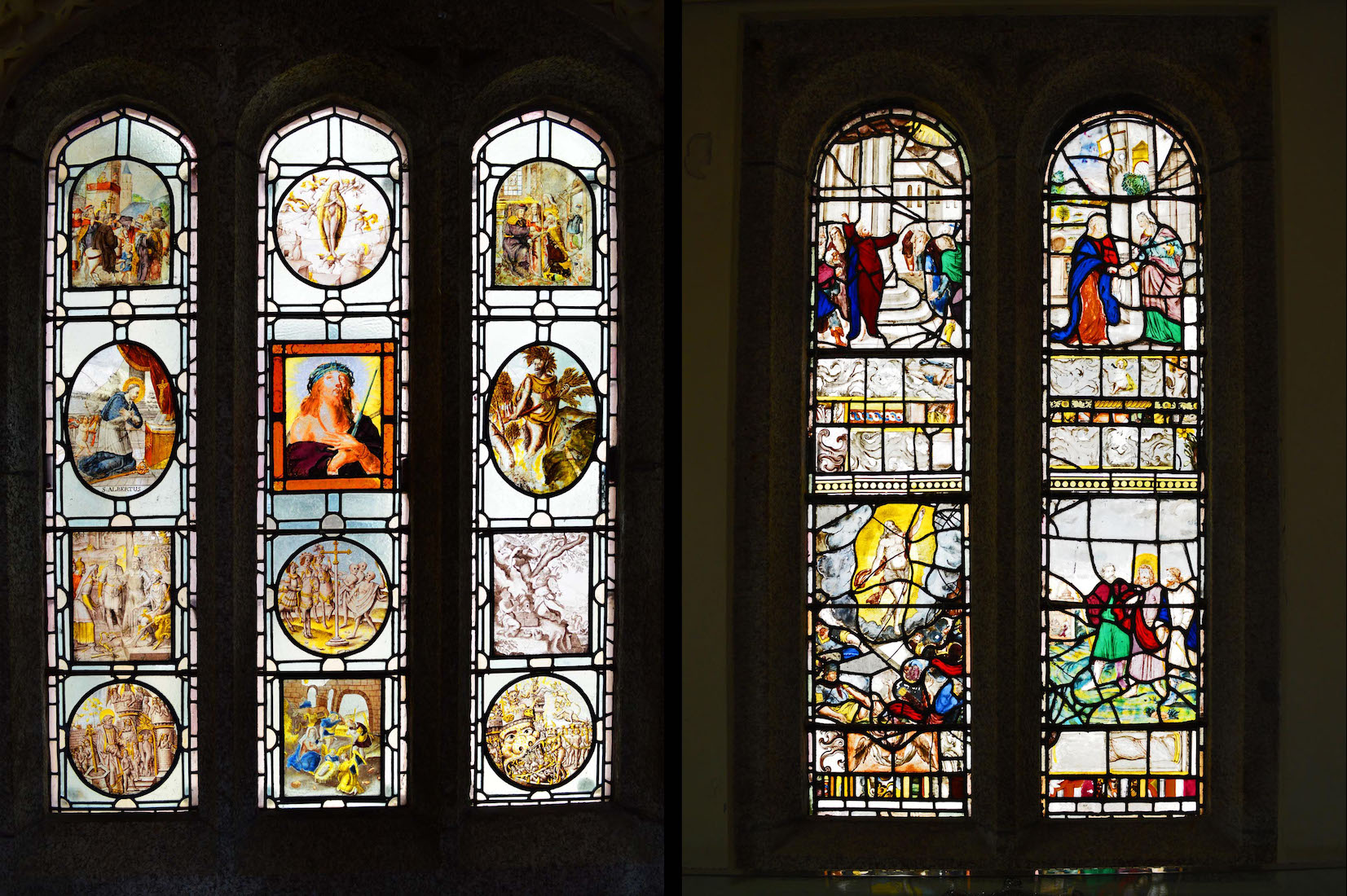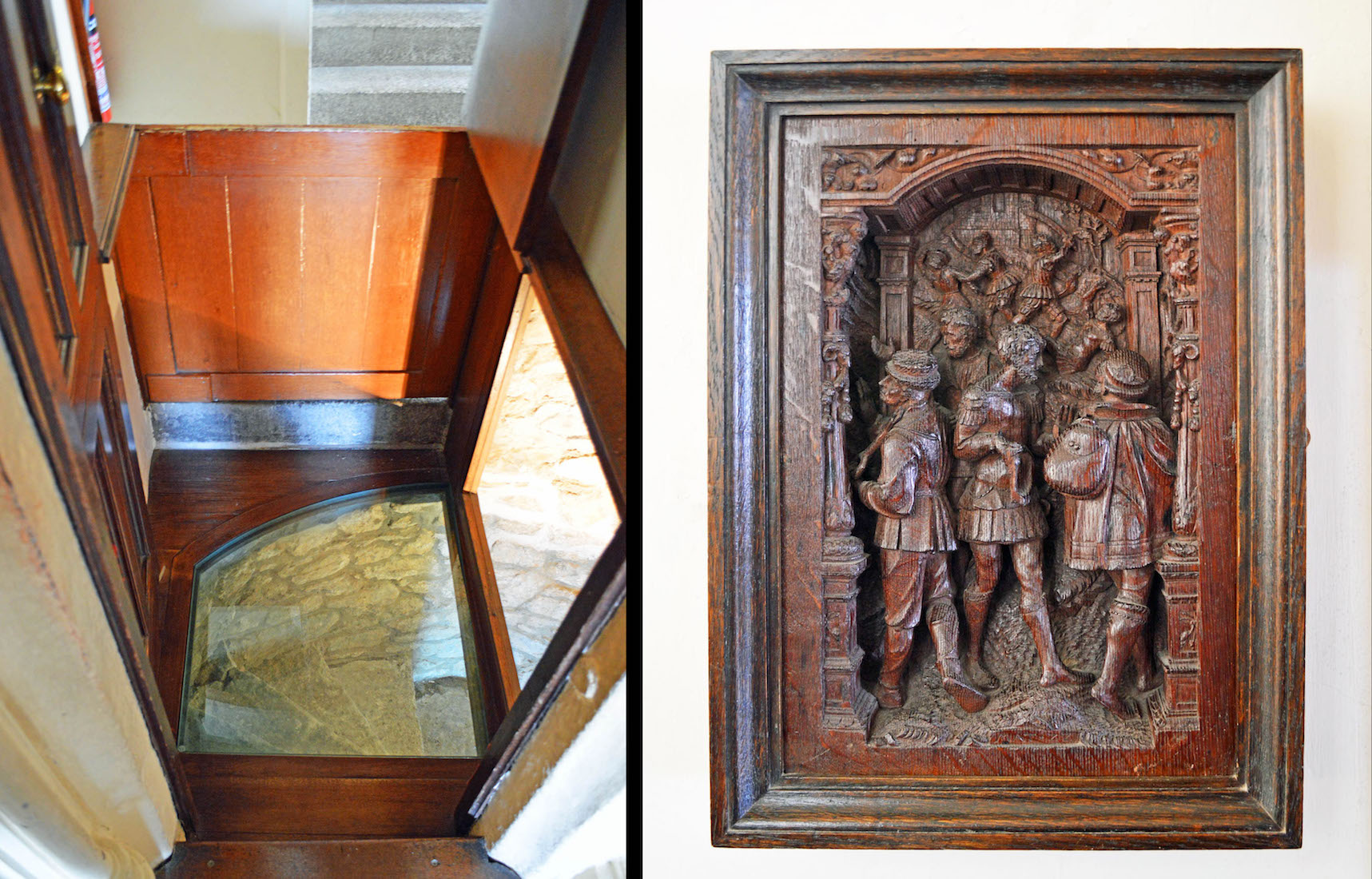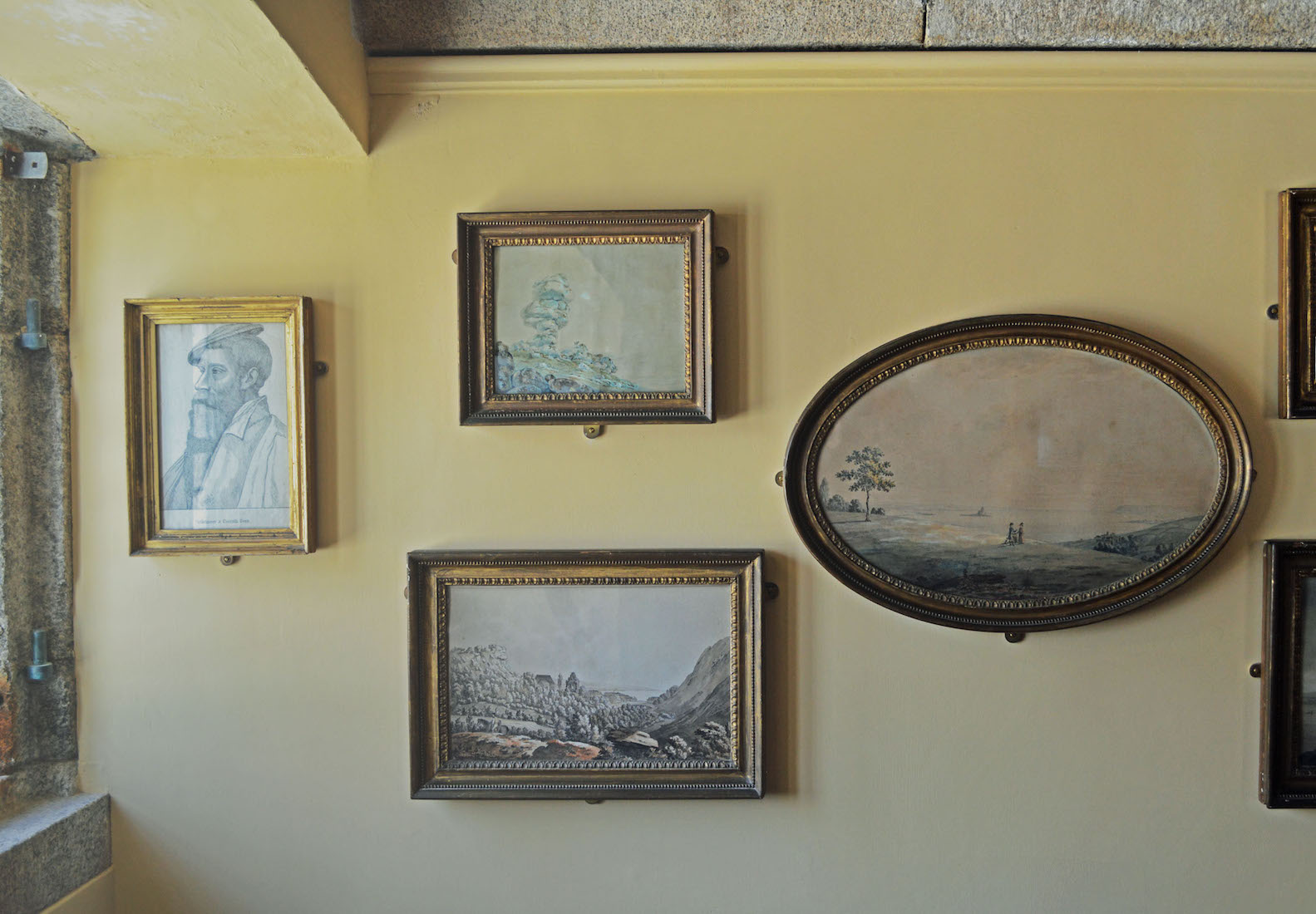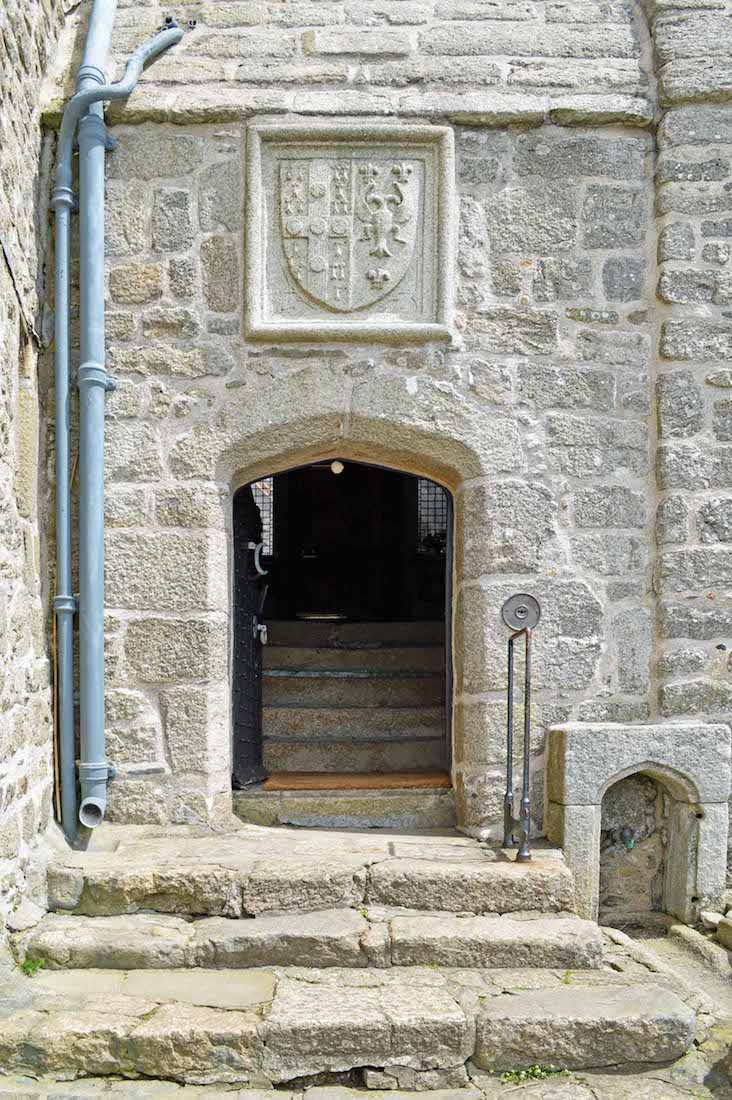
Even in monastic times the entrance would have been guarded. Later the castle would have accommodated the Captain of the Mount and his soldiers. The crest above the West Door contains the St Aubyn family cross on the left and on the right a double-headed eagle – a common symbol representing power in ancient Greek city-states. PLAN
D15. ARTEFACTS DISPLAY
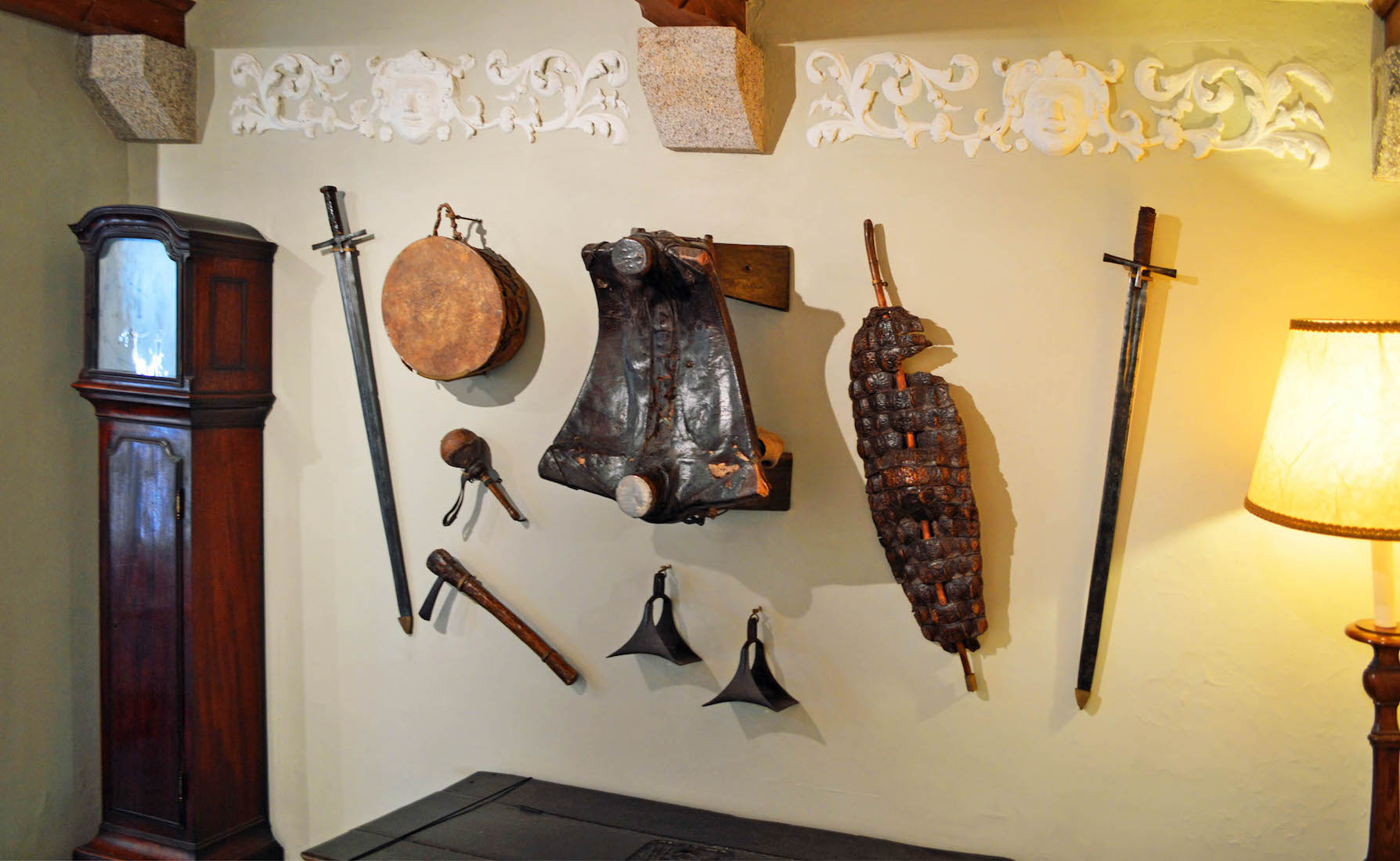
We come through the West Entrance, and turn right into the Entrance Hall. On the wall to our right stands an old grandfather clock, and a display of old artefacts, including a camel saddle! Notice too the ornate white frieze which decorates the top of this wall.
D16. ENTRANCE HALL
At the far end of the Entrance Hall stands a fireplace with the St Aubyn arms displayed above. The glass case contains the remains of a fifteenth century cannon which were found outside the West Door. We shall shortly leave this Hall by the door at far left.
D17. ENTRANCE HALL WEAPONS
The east wall of the Entrance Hall carries a display of old swords and rifles collected by the family over the years. The fancy plaster friezes were moved from the room above during the Victorian restoration of the Castle – an extraordinarily delicate undertaking.
D18. COAT OF ARMS
A close-up view of the family coat of arms. On the left we have the St Aubyn arms; on the right the arms of Ann Jenkin of St Columb, wife of the 1st Baronet. The St Aubyn family motto is In Se Teres, which roughly translates as complete, or rounded in himself. This is an extract from the description of a moral man in Horace’s Satires.
D19. CORRIDOR, PORTRAIT
We leave the Entrance Hall, passing along this narrow corridor. We also pass this small painting of an elderly man, elegantly dressed in black. This is the first Lord St Levan, soon after he was made a peer in 1877. He spent over £100,000, a fortune in the 1870s, building the East Wing of the Castle, as well as transforming the village from a sprawling collection of buildings, many in a considerable state of disrepair, to what now exists by the harbour.
D20. ST JOHN’S ROOM
We enter Sir John’s Room through a doorway just to the left of this view. This south-west wing of the Castle was added in the sixteenth century after the Reformation. Until the renovations of the 1970s, this room was a kitchen. The painting on the left is of the 5th Sir John as an old man. Many St Aubyns have been called John. Following Colonel St Aubyn, himself a John, the next five generations were all called Sir John.
D21. NORTH WALL
This is the north wall of Sir John’s room. The quietly ornate fireplace is surrounded by ornaments and small paintings of the time.
D22. PAINTINGS
On our way from Sir John’s Room to the Library we pass through a long Ante Room. The stormy scene is a painting by Paul Sandby, perhaps the most prominent early painter of water colours in England.
D23. ANTE ROOM
The main feature of the Ante Room is the collection of miniatures contained in the cabinet on our left as we enter. Before the age of photography, the gift of a miniature was a charming way of providing a loved one with an image to remember.
D24. THE LONG ANTE ROOM ...
The long Ante Room contains several paintings of panoramic views of St Michael’s Mount. They date from the late seventeenth or early eighteenth century.
D25. LIBRARY
The Library is one of the most appealing rooms in the Castle. It formed part of the twelfth century monastic buildings, and was converted to its present format in the 1780s. At this time a ceiling was built, and a new bedroom placed immediately above. The room has a charming, intimate feel.
D26. LIBRARY II
The watercolours in the Library were painted by John Cole, who was steward to the 5th Sir John St Aubyn. Among the furniture, it is worth noting the brass inlaid mahogany chairs either side of the gaming table, which are part of a set made by John Channon of London.
D27. LEAVING THE LIBRARY
Steps lead down from the Library to Chevy Chase.
D28. CHEVY CHASE
The name Chevy Chase is a loose punning reference between the medieval ballad, Chevy Chase, and the hunting scenes in the plaster frieze that runs all around the room. In Norman times, this would have been the monks’ refectory. After the dissolution of the monasteries, the room was reconstructed as the Great Hall of the Castle. The roof timbers date from this period.
D29. CHEVY CHASE COAT OF ARMS
To celebrate the Restoration of the Monarchy, Colonel St Aubyn installed the Royal Coat of Arms above the fireplace in Chevy Chase. At the other end of the room is the coat of arms above: the arms of the St Aubyn family with the double headed eagle of the Godolphin family, of whom his wife Catherine was a member.
D30. CHEVY CHASE WINDOWS I
A special feature of Chevy Chase is the beautiful stained glass in the north wall. These include samples of Dutch, English, Flemish and French work which were collected by the 5th Sir John, and probably acquired from private chapels and oratories.
D31. CHEVY CHASE SILVER COLLECTION
In the alcove at the eastern end is a selection of the family silver. This largely dates from the 18th century as successive generations continued the conversion of the Castle from a military garrison to a more comfortable private home.
D32. DOWNWARD STAIR AND WOOD CARVING
Before we leave Chevy Chase we note the sealed downward staircase by the north wall. There is also an interesting wood carving.
D33. SMOKING ROOM
We move from Chevy Chase to the rather less glamorous Smoking Room. This was so named because it was where gentlemen would retire to smoke their cigars and drink their port after dining in Chevy Chase. The west wall features a number of faded water colour paintings.



